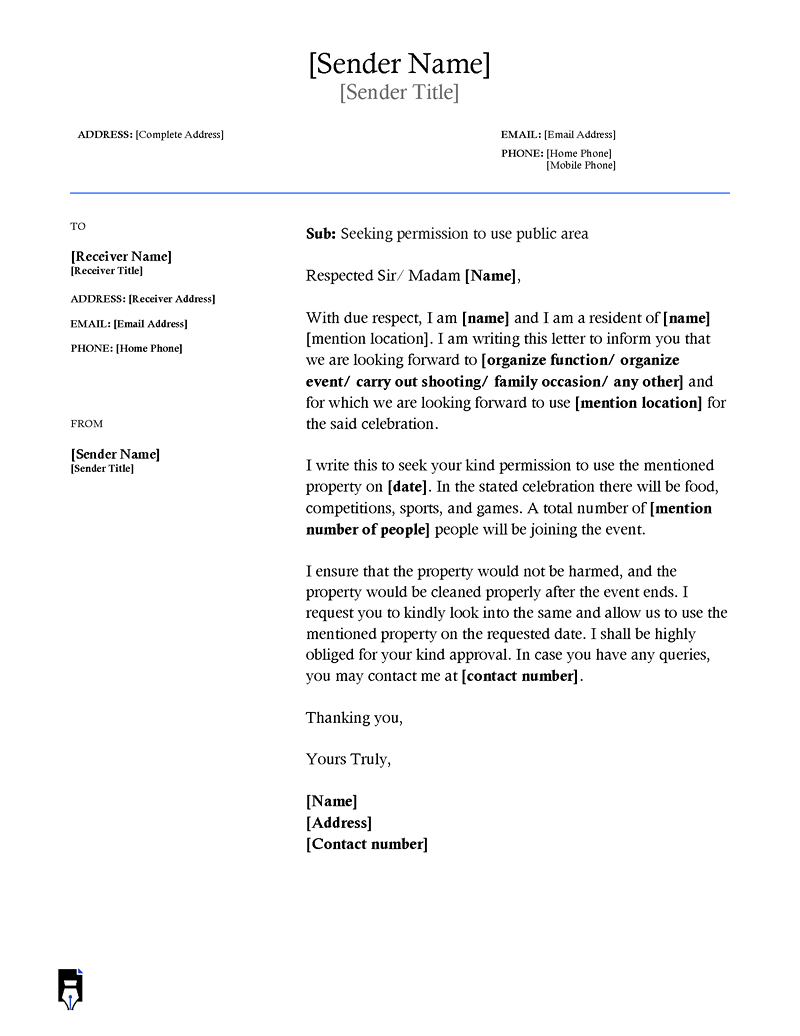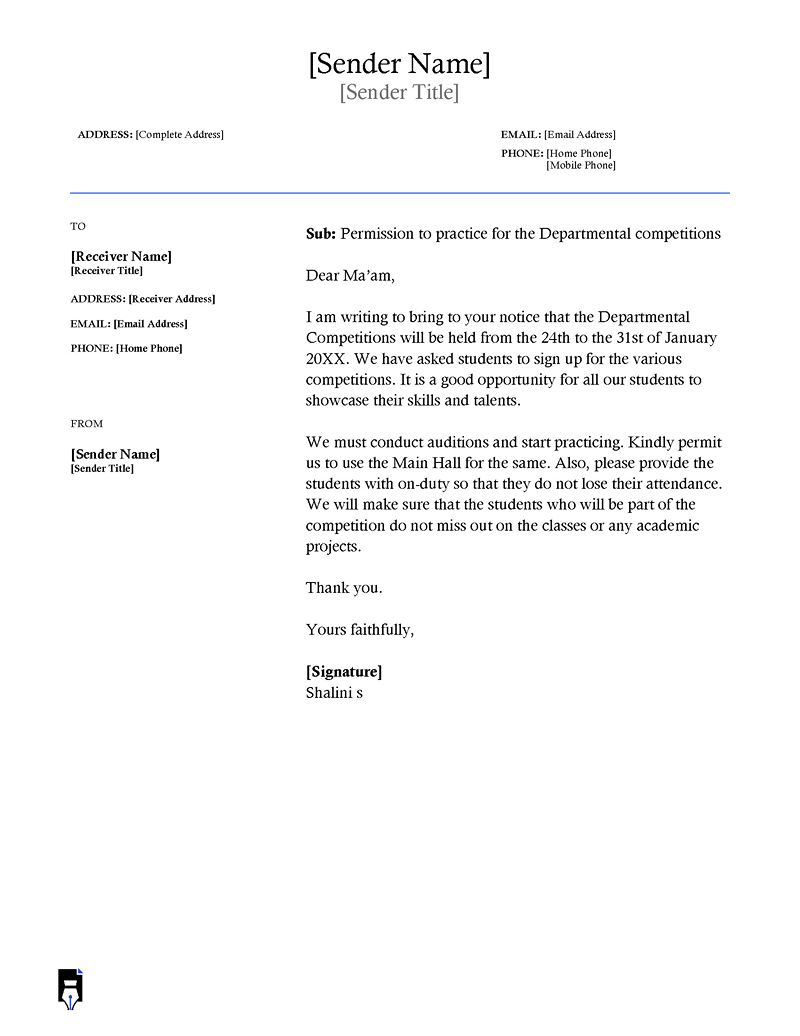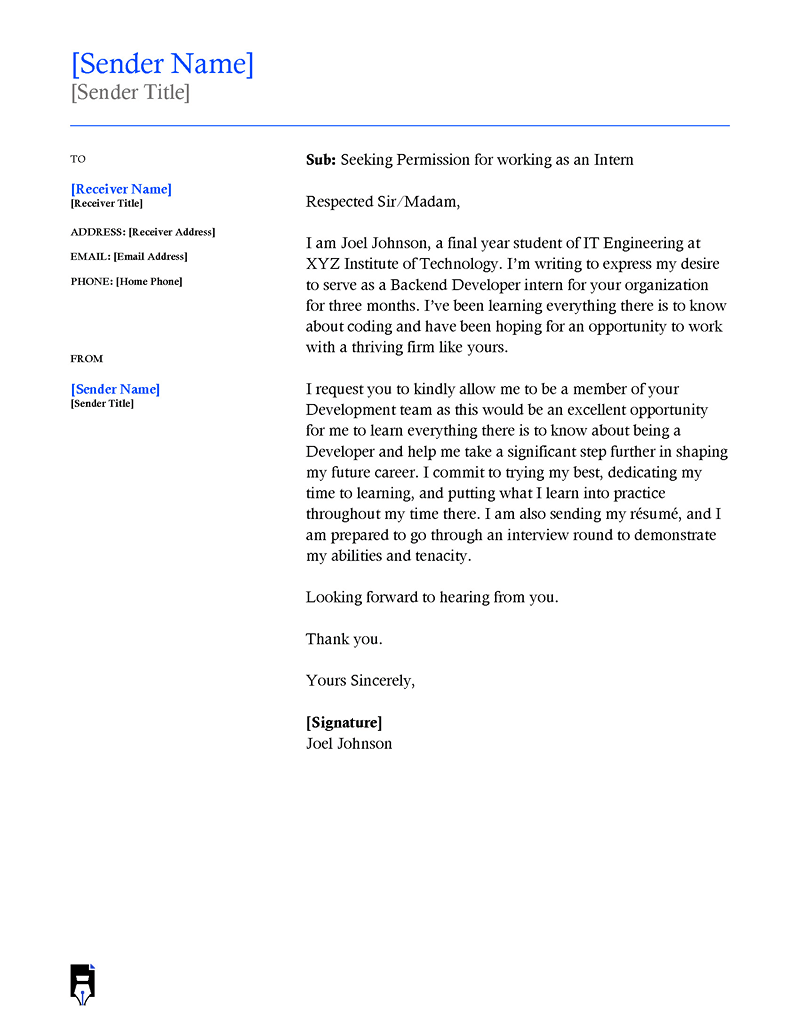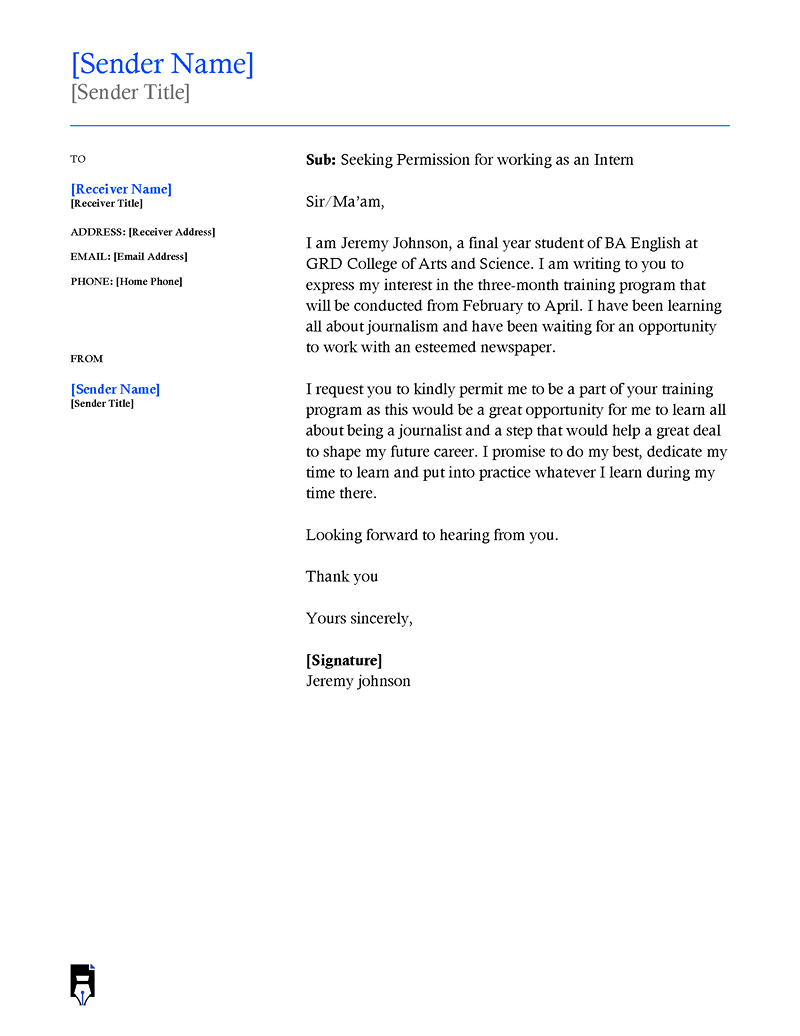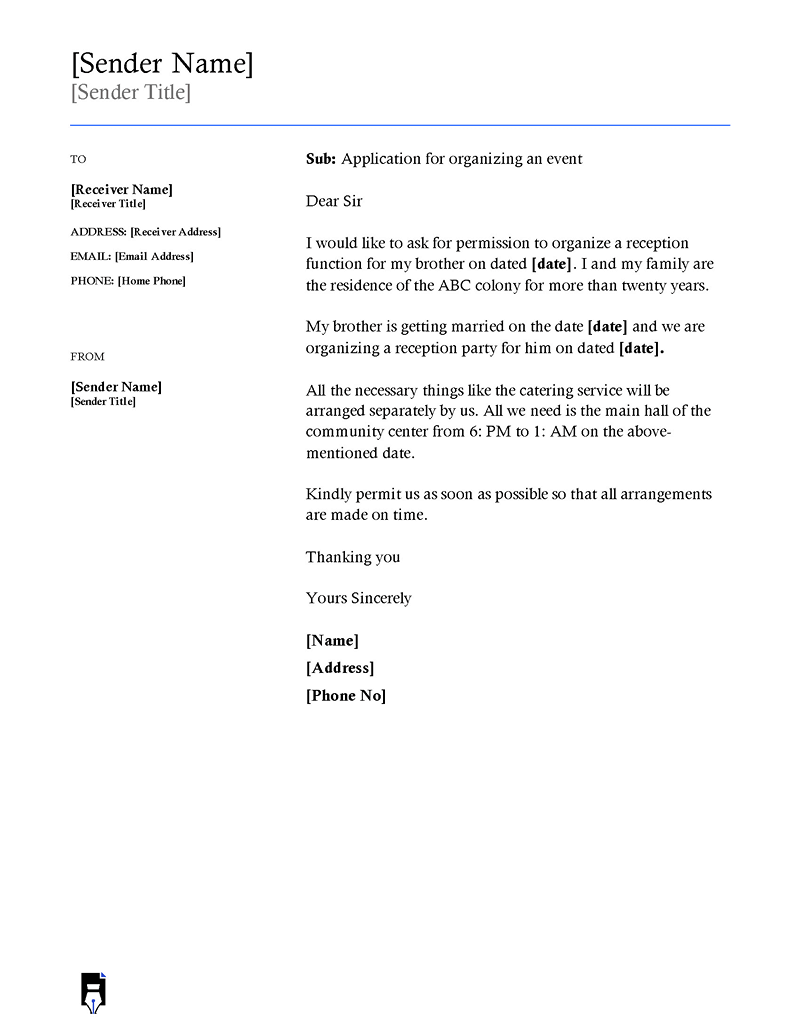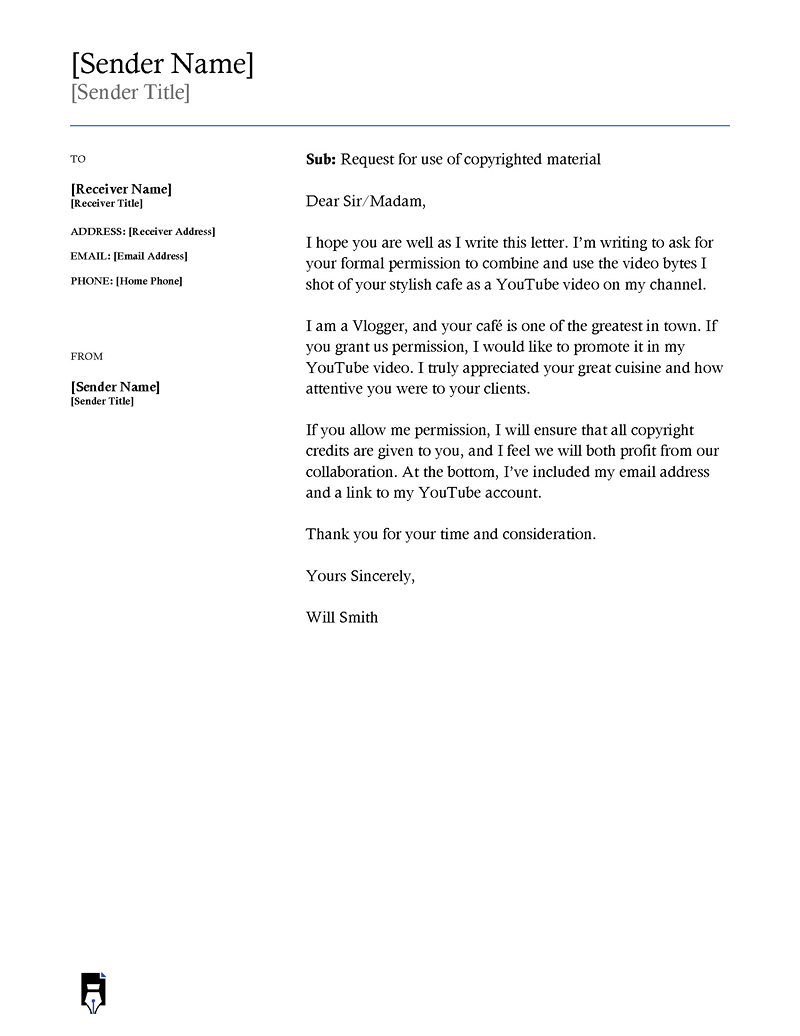A permission letter is a formal document used to ask permission from a higher authority for certain requests to be fulfilled.
The requests may include asking for a leave, attending an event, going on a trip, or requesting access to certain documents or information. To ensure your request gets approved, it is important to write the letter properly and address it to the right authority that has the power to grant permission.
Permission letters are usually rotated in working offices. Employees must seek permission from their boss or supervisor when they want to take time off or be absent for a certain period. However, it is possible that the request may not be granted. The employee must ensure that the letter they write is effective to increase the chances of obtaining permission.
Permission Letter Templates
Given below are permission letter templates:
This article will break down everything you need to know, including why you may want to write the permission letter, how to write it in six easy steps, and tips to consider when writing it. Free downloadable letter templates can also help you write a letter on your own.
Reasons for Using a Permission Letter
There are various reasons why one may want to write a permission letter. Here are some of the most common reasons:
- A student may be required to submit a permission letter signed by their parents or guardians to be absent from school for important reasons. The letter serves as a formal request and explanation for the absence.
- Students may also be required to submit a permission letter to participate in school events or activities. This letter requests permission to participate and may include details such as the event or activity in question, the date, and the student’s responsibilities.
- Employees who request a paid leave of absence from their employer may be required to submit a letter explaining the reason for their absence and the duration. The letter should also include information on why the company should grant the request, such as the employee’s responsibilities and what the company can expect when the employee returns. Using polite language, being transparent about the reason for the absence, and offering to complete work remotely can increase the chances of being granted permission for time off.
- Minors who need their parent’s or guardians permission to travel may be required to submit a letter requesting permission. This letter should include the reason for traveling, the expected duration of the trip, and the itinerary. The letter serves as a formal request for permission and provides important information to the parent or guardian regarding the travel plans.
How to Write a Permission Letter: 6 Key Steps
This letter is a great way to let someone know about an important request you have. To make it easier for you to write a letter that will be accepted, consider applying these six key steps:
Address the letter
The letter should be addressed to the person who will be deciding whether your request will be granted or denied. If you are writing a letter asking your employer for permission to travel, then you should address it to your supervisor or personnel officer. If you write a school permission letter, address it to your teachers or principal. Make sure that you address the letter correctly. You should always start the letter with “Dear (the person’s name)” or “To whom it may concern” if you don’t know the person’s name.
Include the purpose of writing the letter
The first paragraph of your letter should include the reason why you are writing the letter. If you ask for permission to travel, include in the first paragraph that you need to travel, how long you will be away, when it will begin, and where you will go. If your request is for a paid leave from work, then include in the first paragraph that you need a paid leave and how long you will stay away from work.
Request permission
In the second paragraph, include a statement stating that you would like permission to do what is stated in the first paragraph. For example, suppose you ask your teacher for permission to participate in a school competition. In that case, you should include a statement that says, “I would like to participate in the (school competition’s name), and I would appreciate it if I could get your approval.” The child’s full name and age must be included in the letter if it grants permission for any activities such as medical treatment or care that the child is involved in.
Focus on details of the issue
Providing enough details and information in your letter is important. The reason for this is that the person you are writing the letter to will be able to easily determine whether to grant or deny your request by reading through the details. Include all of the information requested in the letter.
For example, if you ask permission to be absent from work for two weeks, include details like why you need to be away from your job, who will cover your absence, and what tasks you will cover on your return.
Conclude the letter
Finally, include a statement that you hope the letter has addressed your requests and that you would like to be granted permission. For example, suppose you are writing a permission letter to your employer requesting an unpaid leave of absence. In that case, you should conclude the letter with a statement: “I hope this request addresses all of your concerns, and I look forward to your approval.”
Sign the letter
Following your organization’s guidelines is important when signing the letter. The requirements for a valid signature on a permission letter may vary from state to state, ranging from a simple signature and date to needing to be notarized or witnessed. It is crucial to properly document your signature in the letter as evidence in case it is requested in the future. This can be done by having a witness sign the letter, such as a parent or guardian, a teacher, or an employer official, who will sign underneath your signature.
Permission Letter Samples
The following are different samples of permission letters that you may find useful when writing your own letter:
Permission letter for leave
My name is Jonh Doe, and I am writing a permission letter for leave from work. I have been working at ABC ltd for seven years, and I am happy with my current job there. However, due to personal problems, I would like to take some time off- work and go on a two-week break. I will be staying at a friend’s house in Doha, Qatar, during this time. I would highly appreciate it if you could permit me and allow me to take my time off work. If you have any questions, please contact me at 555-555-5555 or email me at [email protected].
Permission letter to organize an event
My name is Evelyn, and I am writing a letter to my teacher requesting permission to have our school organize an event. I would like to hold the event on the 17th of August, beginning at 4 P.M. and ending at 6 P.M. in the school courtyard. The purpose of this event is to celebrate my graduation ceremony. It will also be fun for friends to get together after our final exams before we say goodbye to each other for good. I would appreciate it if the school could permit me to organize this event, and I will be sure to apply for all the necessary permits and licenses to make sure the event is completely legal. I hope this letter has addressed all your concerns. I look forward to hearing from you soon.
Permission letter to organize a study tour
My name is Sara, and I am writing a letter requesting your permission to organize a study tour. We will be traveling from Austin, Texas, to Washington, D.C., to view the historical monuments in these two cities of the United States. The total number of students will be 15, including myself, and there will be two teachers. We will travel by bus and stay in hotels, which I have already found. The study tour dates are scheduled on the 22nd and 23rd of June, and before we leave for Washington, D.C., we will also have a few days to visit San Antonio. I hope you permit me to organize this study tour, as I know it is a significant part of the course curriculum. If you have any questions, please contact me at 565-5656 or email me at [email protected].
4 Tips to Help You Write an Effective Permission Letter
To help you write an effective permission letter, here are some key tips that you should consider:
Use business letter format
The format of the letter is important and will help to build a professional tone. For example, you can write your letter on good-quality paper and include the sender and recipient’s address at the top of each page. Include your full name, contact number, email address, and mail or street address below your contact information. Your first paragraph should contain a proper salutation like “Dear sir/ madam” followed by a colon (:). Then, proceed with a short introduction, followed by a body and a closing paragraph.
Be relevant and concise
When crafting a permission letter, it is important to maintain a clear and focused tone, using formal language throughout. Only include information relevant to the request and avoid providing unnecessary personal details. While it is not necessary to include excessive information, providing sufficient reasoning for the permission being sought is important.
Avoid errors
Before sending a letter, it is essential to proofread it to avoid spelling and grammar errors thoroughly. Such errors can give a negative impression, so make sure to double-check the letter for accuracy before sending it.
Include proper reasoning
Ensure that you include sufficient reasons for your request. For example, if you ask permission to take a vacation, you should include details such as why the request has arisen and why you think it is needed. Ensure that the reasons are adequate so the letter cannot be dismissed easily.
Conclusion
To conclude, writing an effective permission letter requires careful attention to detail and clear communication. The letter should be specific, relevant, and well-structured, capturing all necessary information and requests. Proofreading is a crucial step in the process, as it helps to ensure that the letter is free of errors, is grammatically sound, and has the right tone. You can also use free samples and templates provided above to help you write an effective permission letter.
Always make a good impression with your writing, as it can reflect your credibility and professionalism. Following this guide can increase your chances of receiving a positive response and achieving the desired outcome.
